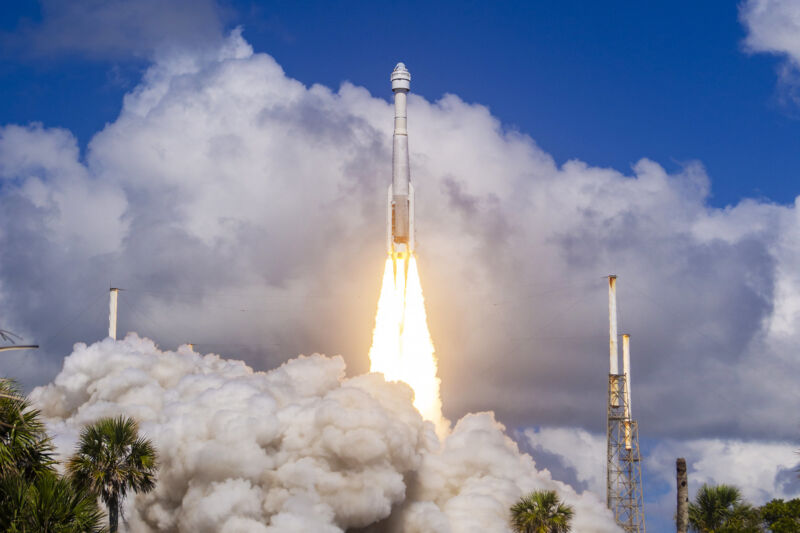
After years of delays, Boeing’s Starliner spacecraft finally rocketed into orbit from Florida on Wednesday, sending two veteran NASA astronauts on a long-delayed shakedown cruise to the International Space Station.
The Starliner capsule lifted off at 10:52 am EDT (14:52 UTC) on top of a United Launch Alliance Atlas V rocket. Fifteen minutes later, after shedding two strap-on boosters and a core stage powered by a Russian RD-180 engine, the Atlas V’s Centaur upper stage released Starliner right on target to begin a nearly 26-hour pursuit of the space station. Docking at the space station is set for 12:15 pm EDT (16:15 UTC) Thursday, where NASA astronauts Butch Wilmore and Suni Williams will spend at least a week before coming back to Earth.
In remarks shortly after Wednesday’s launch, NASA Administrator Bill Nelson said Wilmore and Williams, both former US Navy pilots, will “test this thing from izzard to gizzard” to ensure Boeing’s Starliner is ready for operational six-month crew rotation missions to the ISS.
A long time coming
This is a big moment for NASA and Boeing. The launch of the Starliner test flight moves NASA closer to having access to two independent commercial spacecraft ferrying astronauts into low-Earth orbit, the cornerstone of an initiative the agency started working toward a decade-and-a-half ago. For Boeing, the first launch of astronauts aboard Starliner comes as the once-vaunted aerospace contractor wrestles with safety concerns over its workhorse 737 jetliner.
NASA awarded Boeing a $4.2 billion contract to complete development of the Starliner spacecraft in 2014, with the goal of flying astronauts on the capsule beginning in 2017. The company first announced the spacecraft that became Starliner, then known only as the CST-100, in 2010 at the Farnborough International Airshow.
At the announcement in 2010, Boeing officials said they hoped to declare the CST-100 spacecraft operational in 2015, but Congress initially didn’t appropriate the funding NASA said it needed to support development of new commercial crew vehicles after the retirement of the space shuttle. Then, Boeing ran into numerous technical issues, resulting in a major fuel leak during ground testing, an aborted unpiloted test flight to the space station in 2019, and further delays caused by valve corrosion. Another test flight in 2022 achieved all of Boeing’s major objectives, setting the stage for the crew test flight.
But last year, officials discovered Boeing had mistakenly used flammable tape around wire bundles inside the Starliner spacecraft, leading to another schedule slip. Engineers also found they needed to redesign a component of the capsule’s parachute system, punting the crew test flight into 2024.
In the meantime, SpaceX’s Crew Dragon spacecraft, which NASA supported alongside Boeing in the commercial crew program, started flying astronauts in 2020. It has now launched 13 crew missions for NASA and private customers.
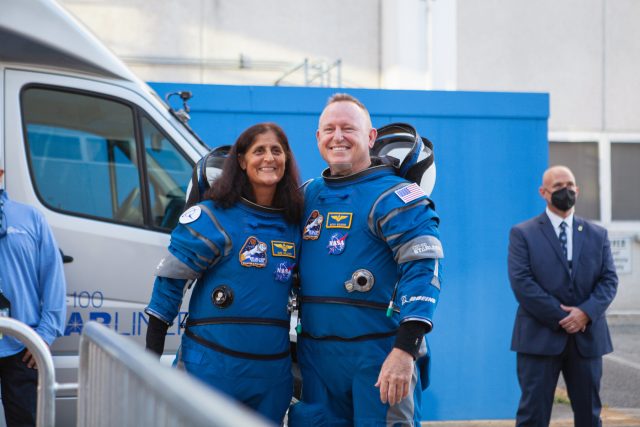
Two previous tries to launch the Starliner crew test flight May 6 and June 1 were cut short by a faulty valve on the Atlas V rocket and a failed power supply for a ground computer at the launch pad. In the time between those two launch attempts, engineers discovered a small but persistent helium leak from Starliner’s service module. Helium, which the spacecraft uses to push propellants from internal tanks to maneuvering thrusters, is an inert gas and non-toxic, and managers eventually determined the leak was stable and did not pose any unacceptable risk to the mission.
That led to approvals to proceed with the June 1 launch attempt, then another countdown Wednesday that was capped by the successful launch of Starliner. Milestones achieved early in the flight showed the spacecraft was performing well.
“We are off and running on the mission,” Wilmore radioed mission control in Houston on Wednesday afternoon. “And I can tell you, I wish we could have taken you all on that ascent. It was pretty thrilling.”
“It was a little bit shocking that we actually launched,” Williams said. This was the third time the two astronauts had strapped into the Starliner capsule in hopes of launching into space, following two scrubbed launch attempts May 6 and June 1.
“It was pretty cool to jump off the planet and then feel the Atlas V do its thing,” Williams said. “There were a few bumps here and there, a couple of Gs.”
This was also the first time a crew launched on ULA’s Atlas V rocket, which flew its 100th mission Wednesday. It’s also the first time astronauts have launched on a member of the storied Atlas family of rockets since the the final flight of NASA’s Mercury program in 1963.
A few hours after launch, Wilmore and Williams each took turns at the controls of Starliner for a series of demonstrations to show that crew members could manually point and fly Starliner if its automation failed. Those checkouts all appeared to go well.
“Suni and I have done some manual maneuvering, and it is precise, more so even than the simulator,” Wilmore said. “I mean, stopping exactly on a number you want to stop on. The precision is pretty amazing.”
One leak becomes three
When he spoke to ground controllers Wednesday afternoon, Wilmore said, thus far, the Starliner test flight had “just gone swimmingly.” But as the crew prepared for an overnight sleep shift ahead of Thursday’s docking at the space station, two new helium leaks popped up on Boeing’s capsule.
The spacecraft’s service module houses most of Starliner’s propulsion system, including 20 larger orbital maneuvering engines and 28 less powerful reaction control system thrusters for fine pointing and smaller adjustments. Starliner has four doghouse-shaped propulsion pods around the circumference of the service module, with lines for hydrazine fuel, nitrogen tetroxide oxidizer, and helium pressurant routed into each thruster pack.
Two helium manifolds feed each doghouse. The leak discovered prior to Starliner’s launch was traced to a flange in one manifold in the port, or left-side, doghouse pod. Late Wednesday, engineers detected two more helium leaks—one with the other manifold in the port doghouse, and another in the doghouse on the top side of the service module.
Brandon Burroughs, a Boeing engineer, described the two new helium leaks as “small” in a discussion broadcast on NASA TV’s live coverage of the Starliner test flight. These leaks didn’t appear during troubleshooting of the known leak on the ground.
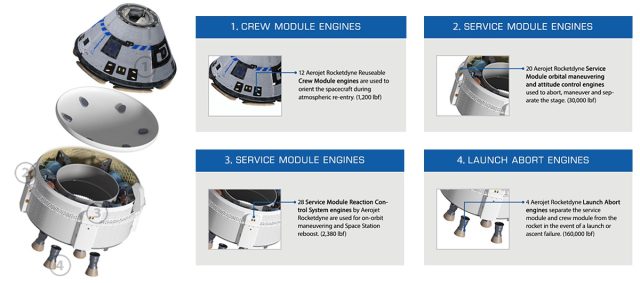
Three of Starliner’s eight helium manifolds now show signs of leakage, and mission controllers told the crew they will have an update on the situation after they wake up at 4:30 am EDT (08:30 UTC) Thursday. It wasn’t immediately clear how significant the leaks might be, or any immediate implications for the spacecraft’s planned arrival at the space station.
“It looks like we picked up a couple more helium leaks,” said Neal Negata, an engineer servicing as spacecraft communciator, or CAPCOM, in mission control. “We’re ready to copy find out exactly what you mean by picked up another helium leak, so give it to us,” Wilmore radioed to the ground a few moments later.
Negata told Wilmore they will isolate the manifolds newly discovered to be leaking helium, while the manifold known to be leaking before launch will remain open. “That will give the teams the ability to manage the spacecraft,” Burroughs said.
Before getting comfortable with launching with the known helium leak, engineers determined the Starliner spacecraft could handle up to four more helium leaks, even if the existing leak worsened, according to Steve Stich, NASA’s commercial crew program manager.
“It’s a tough system,” Stich told reporters last month. “This is a high-pressure system, and helium is a very small, tiny molecule, and it tends to leak.”
In its current configuration, six of the spacecraft’s 28 reaction control system thrusters will be disabled. The capsule has the ability to operate on a subset of its thrusters, and Burroughs said Boeing engineers believe “the helium system remains safe for flight.”
“This was not unexpected, and we plan for cases like this,” he said. “The team will be working to make sure we’re in a good configuration to complete our mission, which is docking and rendezvous with the ISS.”


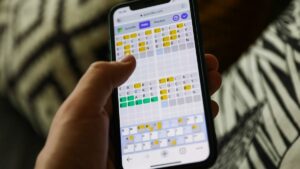







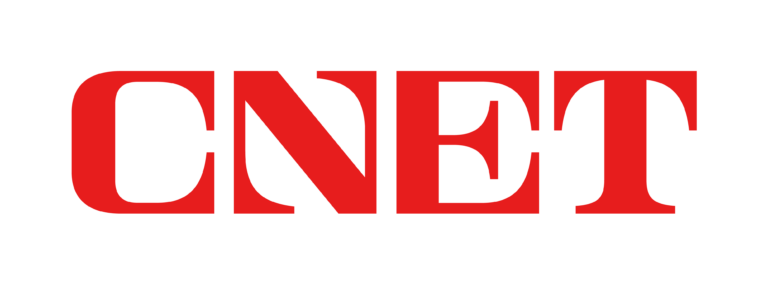

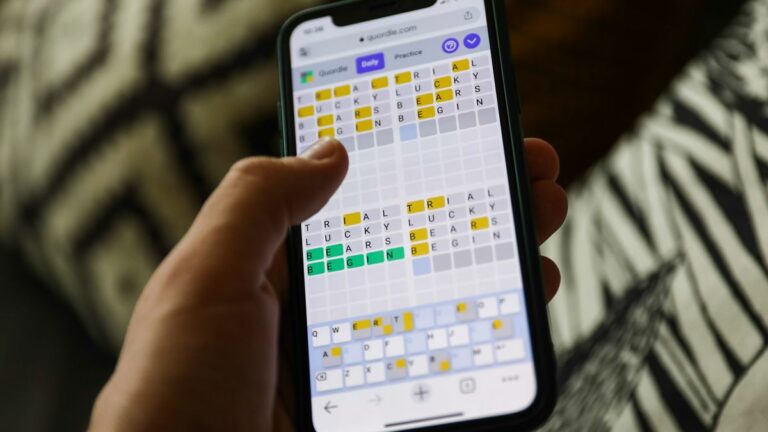







+ There are no comments
Add yours